Scholarships
For the Master Class, there is a scholarship available from The Wurm Foundation. To apply for it, please send your most recent CV and academic transcript to icapaw2019@gmail.com. As the email subject, please put “ICAPaW2019 Master Class Scholarship Application”.
The deadlines to apply for the scholarship is on 19 July 2019.
The outcome of the scholarship application is on 31 July 2019.
Invited Speakers

Professor Simon Haberle (Australian National University)
Reconstructing vegetation cover and long-term environmental change in Sunda and Sahul
Abstract
Reconstructing past vegetation cover through the study of microscopic plant remains preserved in sedimentary environments – otherwise known as palaeoecology – provides an important window into the nature, pace and direction of environmental change through time. Existing lines of evidence point to significant changes to biodiversity, vegetation cover, and fire frequency since the arrival of Homo sapiens into Sunda (island SE Asia) and Sahul (Australia-New Guinea) sometime around 65,000 years ago. In this paper I show how detailed reconstructions of past landscapes can be derived from pollen and charcoal preserved in sedimentary records and present a review of the nature of the past environments during the span of time from when H. sapiens first encountered this landscape through to the managed and human influenced landscapes described at European contact. The new Australian Research Council Centre of Excellence in Biodiversity and Heritage in Australia aims to build our capacity in interdisciplinary studies by combining archaeological and palaeo-environmental to allow an assessment of how people adapted to changing conditions and in turn may have driven these changes.
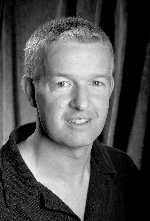
Professor Chris Ballard (Australian National University)
History and language transformation in Oceania
Abstract
What can the study of history bring to the reconstruction of language transformation? While historical linguistics has forged powerful collaborations with anthropology, archaeology and genetics, the relationship with history is much less developed. A series of vignettes from New Guinea and Vanuatu illustrates some of the potential of both oral traditions and documentary history in recasting questions about the evolution of contemporary language diversity in Melanesia: on the migration of the ancestors of the Agarabi-speakers and their adoption of Gadsup language in Papua New Guinea’s Eastern Highlands; on the complex layering of Melanesian and Polynesian languages in Central Vanuatu; and the distinctive diffusion after 1871 of tools, crops and terms introduced by Russian anthropologist Nikolai Miklouho-Maclay to the Madang coast.
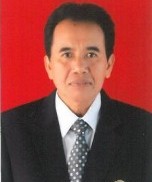
Professor Ketut Artawa (Udayana University)
Adjectives of emotion and their corresponding derived verbs: A typological perspective
Abstract
Adjectives can be found in every language, however, the types and sizes of adjective each language has could be different from one another. In a great majority of languages, adjectives are semantically used to state a property and specify the referent of a noun ( Dixon, 2010: 91). This paper will account for the interaction between syntax and semantics of adjectives of emotion and their corresponding derived verbs in Indonesian. The analysis makes use of a number of syntactic tests comparing the syntactic properties of the adjectives of emotion with their corresponding derived verbs. The syntactic tests include the various functions that the adjectives of emotion and corresponding derived verbs can fulfill in the clause structure, their ability to take a modifying element, their syntactic properties in a comparative construction, and their ability to be combined with human noun and non-human noun as a grammatical subject of the clause. The result of the analysis showed that both the adjectives of emotion and their corresponding verbs can fulfil similar functions; however, the functions of derived verbs are more restricted. This may relate to the notion of markedness. As derived verbs, they still showed the syntactic features of their base forms in that they can take modifying elements. The interesting and important syntactic feature of the adjectives of emotion and their derive verbs is that when functioning as a head predicate, the subject of the base adjective is semantically an EXPERIENCER and human, while for the verb form, the subject is semantically a STIMULUS and thing, it may also occur with a human subject, but it is less common.
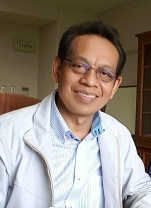
Associate Professor I Wayan Arka (Australian National University)
On the competition dynamics and eco-linguistic equilibrium of minority languages: case studies from Indonesia
Abstract
I discuss different variables involved in the competition dynamics of eco-linguistic equilibrium affecting the wellbeing of minority languages, based on my documentation research on minority Austronesian and Papuan languages of Indonesia. Extending the notion of ecological equilibrium to include language as part of larger co-existence and mutual interactions of humans with their natural-biological, social-cultural-symbolic, and cognitive ecologies (Haugen 1972, Næss 2008, Chen 2016, among others), I argue for the significance of symbolic social-cognitive variable for a healthy eco-linguistic equilibrium of a minority language. There is good empirical evidence from Loloan Malay (an Austronesian language spoken in western Bali) showing that small population size is not a detriment to the language’s well being in the competition dynamics in multilingual setting, and that high language vitality is tightly associated with the identity-related symbolic status of the language. Nevertheless, in the case of Marori (a highly endangered Papuan languge of Merauke) and Enggano (an Austronesian language on Enggano Island, southwest of Bengkulu), the population size with an increasingly dwindling number of speakers is indeed a critical variable, seriously affecting the equilibrium resulting in rapid language shift. In the full paper, I provide further support for the close connection of language’s well being, distinctive identities and the speakers’ dynamic ecology, and also discuss language advocacy, literacy resources and other strategies mitigating the negative effect of the competition dynamics of languages in contemporary Indonesia.
References
Chen, Sibo. 2016. “Language and ecology: A content analysis of ecolinguistics as an emerging research field.” Ampersand no. 3:108-116.
Haugen, E. 1972. The Ecology of Language. Redwood City, CA: Stanford University Press.
Næss, A. 2008. “Ecology of Wisdom: Writings by Arne Næss.” In, edited by A.R. Drengson and B. Devall. Counterpoint, Berkeley, CA.
ICAPaW-2019
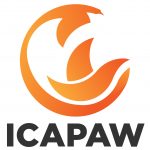
The 2019 International Conference on The Austronesian and Papuan Worlds (ICAPaW)
6 – 8 September 2019 at the Faculty of Arts, Udayana University,
Denpasar, Bali – Indonesia
The Dynamics of the Contemporary Austronesian and Papuan Worlds from Cross-disciplinary Perspectives
sub-themes
The dynamics of Austronesian/Papuan languages
phonetics and phonology, morphosyntax, semantics, discourse/pragmatics, vernacular acquisition/learning/teaching, translation and interpreting
The socio and cultural dynamics of indigeneity, heritage and identity
multilingualism, cultural pluralism/multiculturalism, language/culture endangerment, vernacular histories/oral traditions, heritage tourism, adat/indigenous rights/advocacy, social and religious harmony
Important Dates
19 July 2019
Deadline for abstract submission and Master Class Scholarship application
31 July 2019
Notification of abstract acceptance and Master Class Scholarship application
1 - 7 August 2019
Early bird registration and payment
8 - 15 August 2019
Regular registration and payment
Contact Person
Dr. I Made Netra, M.Hum (+6281337291620)
Dr. Seri Malini M.Hum (+628124614676)
Yana Qomarianna, S.S., M.Ling (+62853376615599)
Email: icapaw2019@gmail.com
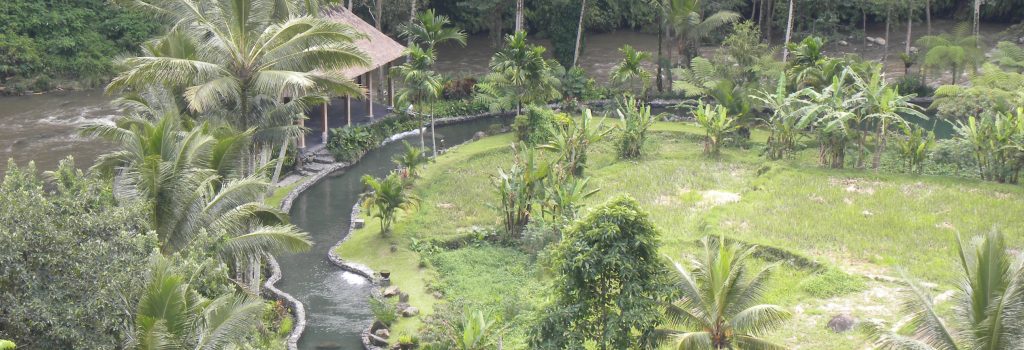
ICAPaW 2019 is jointly organised by the Australian National University and Udayana University
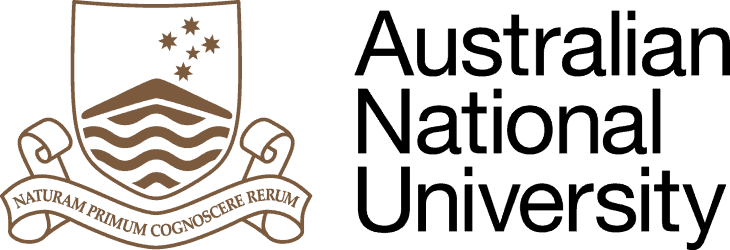
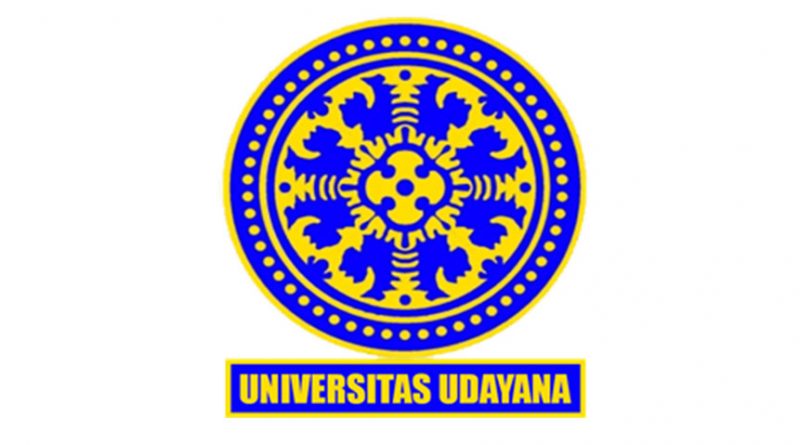
Call for Papers
Important dates
Abstract submission deadlines: 19 July 2019
Notification of acceptance: 31 July 2019
Submit your abstract to icapaw2019@gmail.com
Themes
We invite abstracts* for 30-minute presentations (i.e. 20 minutes presentation and 10 minutes discussion) on any topics in relation to the socio, cultural and linguistic dynamics of the Austronesian and Papuan Worlds, particularly with special areal focus on Indonesia. We welcome papers that discuss the following sub-themes:
- The dynamics of Austronesian/Papuan Languages
- phonetics and phonology, morphosyntax, semantics, discourse/pragmatics, vernacular acquisition/learning/teaching, translation and interpreting
- The socio and cultural dynamics of indigeneity, heritage and identity
- multilingualism, cultural pluralism/multiculturalism, language/culture endangerment, vernacular histories/oral traditions, heritage tourism, adat/indigenous rights/advocacy, social and religious harmony
- The dynamics of Austronesian/Papuan Languages
Abstract specification
Please submit a one-page abstract (A4) in English, preferably in .docx file format. Font type is Arial with the size of 10 points or larger and margins of at least 1.5 cm on all four sides. Abstract should include title (Please use our abstract template). All abstracts will be reviewed anonymously. Omit name and affiliation, and avoid obvious self-reference.
Information about the title of your abstract and the author(s) must be included in the body text of your email sent to the committee with the following format:
- TITLE OF YOUR PAPER
- AUTHOR 1 NAME (FIRST_LAST)
- AUTHOR 1 EMAIL
- AUTHOR 1 AFFILIATION
- AUTHOR 2 NAME (FIRST_LAST)
- AUTHOR 2 EMAIL
- AUTHOR 2 AFFILIATION
- … (repeat if you submit multiple-authored paper)
*Note: Abstracts in Indonesian are welcome, but the authors have to provide the English version of the abstracts when their abstracts are accepted for presentation after the review.
Master Classes and Guest Lecture
Indigeneity, Heritage and Vernacular Histories
Associate Professor Chris Ballard (Australian National University)
5 September 2019
History is a fundamental resource which living communities continue to draw on to position themselves in the contemporary world and to imagine and plan for their futures. The central goal of this master class is to build the confidence to work with, understand and write about Indigenous or vernacular forms of heritage and history, in Indonesia and beyond. This is a very useful skill for graduate students in anthropology, history, linguistics, and any other discipline that involves reconstructing either recent or deep pasts with local communities. By vernacular history, we mean any history which does not form part of an official or scholarly account of the past. This can include oral history, family or communal history, genealogy, or tangible and intangible forms of cultural heritage, along with other ways of representing the past, such as song, dance, art, and other daily practices.
The workshop will introduce you to the concept of vernacular history, and to some of the relevant methods and tools of research. We will look at how local communities express their histories, and how these histories reflect different notions of time and temporality. We will use case studies from both Austronesian and Papuan communities in eastern Indonesia, Papua Province, Papua New Guinea and Vanuatu, to explore field research methods and strategies, and to understand the role of archival materials (word lists, photographs, artefacts etc.) in prompting and eliciting vernacular histories. These same case studies will also provide us with a sense of the complexity, as well as the enormous richness of vernacular histories in our region, and will hopefully inspire you to conduct this form of research.
The following readings will help to prepare you for the class:
Wellfelt, Emilie 2016. Historyscapes in Alor: Approaching indigenous history in Eastern Indonesia. Doctoral dissertation, Linnaeus University. [Extracts]
Gammage, Bill 1981. ‘Oral and written sources.’ In Donald Denoon and Roderic Lacey (eds) Oral Traditions in Melanesia. Port Moresby: UPNG and IPNGS, pp.115-122.
Linguistic Typology and Austronesian Morphosyntax
Associate Professor I Wayan Arka (Australian National University)
Professor Ketut Artawa (Udayana University)
Dr. Sonja Riesberg (University of Cologne)
9-14 September 2019
Description
This course is an introduction to the fundamental concepts of (morpho)syntax in linguistics and linguistic typology — the study of worldwide distribution of linguistic diversity by investigating the patterns in languages’ similarities and differences. We will discuss the rich variety of syntactic structures found in the Austronesian world. Austronesian is the world’s largest language family in terms of geographical spread, spanning more than half the globe: from Madagascar to Easter Island, and from Taiwan to New Zealand. This vast and diverse language family is also one of the best documented. It includes both major world languages with millions of speakers, like Indonesian and Tagalog, and tiny Oceanic languages spoken on a remote island with only a couple of hundred speakers.
During the course you will be exposed to the aims, methods, and research results of typology within the domains of (morpho-)syntax. The course will also offer glimpses of recent developments in how linguistic typology interacts with other types of linguistic pursuits, such as descriptive and documentary linguistics, historical linguistics and theoretical linguistics.
The sessions will be organised around comparative-typological themes, providing the foundation for analysis of the similarities and differences among different subgroups of Austronesian languages. Upon successful completion of this course, you should be familiar with the salient typological profiles of the Austronesian languages, and you should be able to do typological research on relevant morphosyntactic topics, including presentation and justification of your analyses and results.
This course is of international standard, and can be taken for credit. It is an intermediate level course of linguistics, equivalent to the ANU’s 2000-level course (6 units).
Mode of delivery
The course will run intensively for 6 days (9-14 September 2019), 6 hours every day, distributed across morning, midday and late afternoon sessions; see the schedule here.
Learning outcomes
Upon successful completion of this course, students will be able to:
-
- summarise and discuss typological characteristics of Austronesian languages based on their grammatical/structural aspects as reported in the most significant publications that address these issues in current typological contexts;
- apply the concepts, principles and methods of linguistic typology to different data sets from Austronesian languages that exemplify them;
- provide an analysis and solve linguistic-typological problems based on concrete new data;
- undertake guided advanced comparative research and develop an analysis on a selected topic for a given project;
- present and justify the research results of the project and the analysis with clarity and focus both orally and in writing;
- evaluate the suitability of basic grammatical theory for typological projects in Austronesian linguistics;
Prescribed reading
Blust, Robert. 2009. The Austronesian languages. Canberra: Pacific Linguistics.
Preliminary reading
Adelaar, Alexander. 2005. The Austronesian languages of Asia and Madagascar: A historical perspective. In The Austronesian languages of Asia and Madagascar, ed. by Alexander Adelaar and Nikolaus P. Himmelmann, 1-42. London and New York: Routledge.
Himmelmann, Nikolaus P. 2005. The Austronesian languages of Asia and Madagascar: Typological characteristics. In The Austronesian languages of Asia and Madagascar, ed. by Alexander Adelaar and Nikolaus P. Himmelmann, 110-181. London and New York: Routledge
Chapter 1 of Blust, Robert. 2013. The Austronesian Languages (the revised edition). Canberra: Asia-Pacific Linguistics.
Chapter 1 of Moravcsik, Edith. 2013. Introducing Language Typology. Cambridge: Cambridge University Press.
Note: Readings for each topic will be given later.

